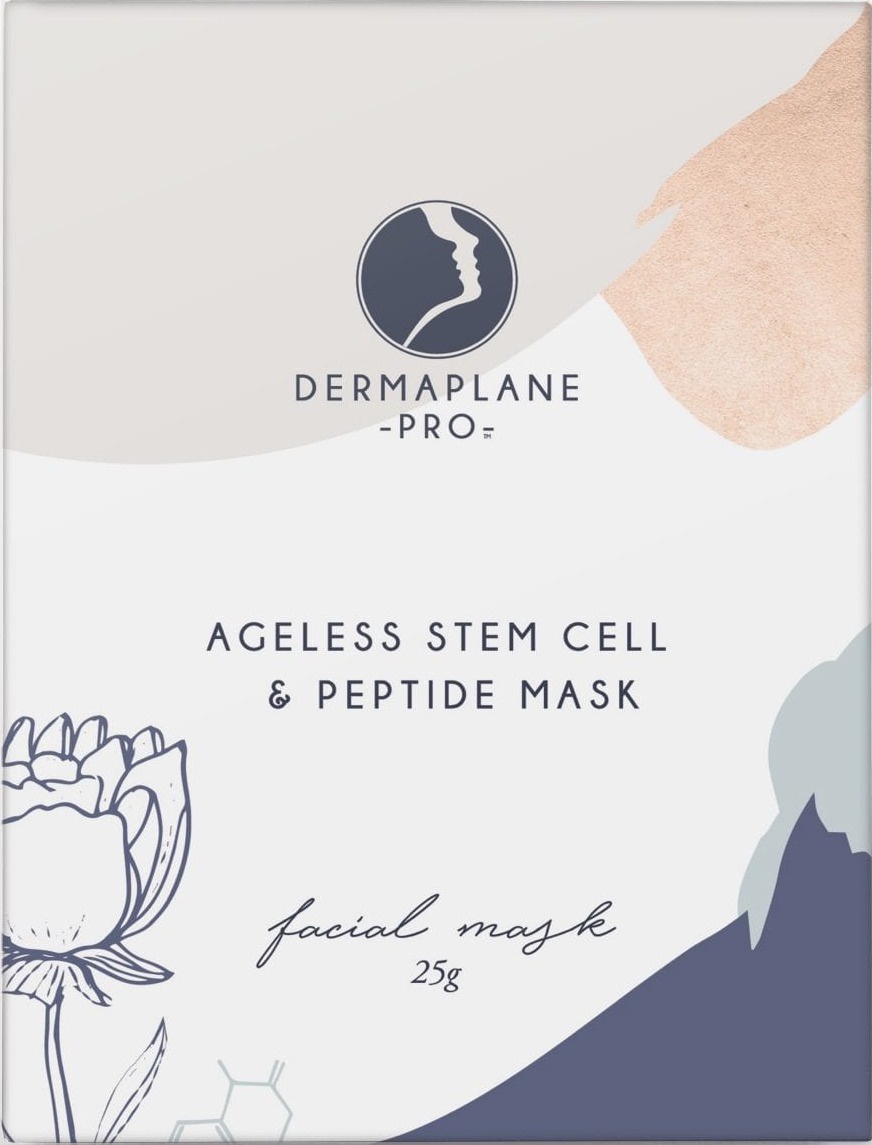
Ageless Stem Cell & Peptide Mask
Highlights
Key Ingredients
Skim through
| Ingredient name | what-it-does | irr., com. | ID-Rating |
|---|---|---|---|
| Aqua | solvent | ||
| Mesembryanthemum Crystallinum Callus Extract | moisturizer/humectant | ||
| Trifluoroacetyl Tripeptide-2 | cell-communicating ingredient | goodie | |
| Vitis Vinifera Fermented Extract | |||
| Cocos Nucifera Fruit Extract | emollient | ||
| Gardenia Tahitensis Flower Extract | |||
| Urea | skin-identical ingredient, moisturizer/humectant | goodie |
Dermaplane Pro Ageless Stem Cell & Peptide MaskIngredients explained
Good old water, aka H2O. The most common skincare ingredient of all. You can usually find it right in the very first spot of the ingredient list, meaning it’s the biggest thing out of all the stuff that makes up the product.
It’s mainly a solvent for ingredients that do not like to dissolve in oils but rather in water.
Once inside the skin, it hydrates, but not from the outside - putting pure water on the skin (hello long baths!) is drying.
One more thing: the water used in cosmetics is purified and deionized (it means that almost all of the mineral ions inside it is removed). Like this, the products can stay more stable over time.

A 3 amino-acid peptide that works by inhibiting the production of progerin, a cell-aging accelerator protein. The manufacturer claims that Trifluoroacetyl Tripeptide-2 can bring back cell activity to a 20-year-old young cell level and the ingredient can nicely increase skin elasticity, firmness and reduce skin-sagging.
In their in-vivo (made on real people) tests, they found that 2% Progeline cream can lift the sagging jaw-line by up to 10% in 56 days and improve skin elasticity and firmness by about 20% in 28 days.
This ingredient name is not according to the INCI-standard. :( What, why?!
The extract coming from the coconut fruit. It is a similar thing to coconut water and fruit juice and is loaded with sugars, minerals, amino acids. It is also claimed to have vitalizing and energizing effects, and some smoothing, emollient and hydrating props.
If you are into coconut, we have more details at coconut water and coconut oil.

Yes, it's the thing that can be found naturally in pee. And in the skin. It is an awesome natural moisturizing factor, aka NMF. NMFs are important components that help the skin to hold onto water and keep it plump, elastic and hydrated. Urea makes up about 7% of NMFs next to other things such as amino acids (40%), PCA (12%) or Lactate (12%).
What makes urea special, is that it is not only a simple moisturizer, but it is thought to be a "small-molecule regulator of epidermal structure and function" meaning that it has a bunch of extra biological activities. It acts as a mild keratolytic agent (some of its moisturizing action is thought to come from urea's ability to break down bonds in the protein called filaggrin and thus freeing up amino acids in the skin), enhances antimicrobial peptide expression and improves skin barrier function.
Being a mild keratolytic agent and strong moisturizer means that high-percentage (10-40%) urea treatments are found effective in a bunch of skin disorders connected to excessive dryness and malfunctioning skin barrier such as ichthyosis, xerosis, psoriasis, eczema and seborrheic dermatitis.
Overall, just like glycerin, urea is a real oldie but a goodie, a nice ingredient in any moisturizer.
You may also want to take a look at...
| what‑it‑does | solvent |
| what‑it‑does | moisturizer/humectant |
| what‑it‑does | cell-communicating ingredient |
| what‑it‑does | emollient |
| what‑it‑does | skin-identical ingredient | moisturizer/humectant |





